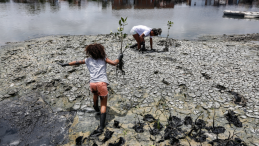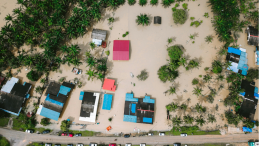Land cover changes have become a significant concern in the field of sustainability. Natural forests are being transformed to Agricultural land, settlements, Plantation forests, and bare land among others. These changes are caused by intricate sets of natural and anthropogenic drivers and they have severe interconnected consequences for biodiversity, ecosystem services, food security and climate change. These problems are particularly common in Southern Africa due to high population growth, urbanization, Industrialization, and growing commercialization resulting from primary progress in economic growth. It is feared that if the current trend is not stopped and reversed, the planet is likely to reach a tipping point in the near future. This will expose society to more ecological crises such as strange diseases; erratic and extreme weather patterns and economic disruption that will affect human livelihoods, particularly women and children. However, Management, Conservation, and Governance of land cover and related resources continue to take a “Silo” approach which makes it costly, fragmented, and unsustainable for the sectors. It is against this background, that this project will employ a convergent mixed methods approach of resource nexus perspective in assessing the drivers and impacts of land cover changes to design a regional nature-positive sustainable development. A detailed literature review will be conducted to identify existing knowledge gaps and state of the art. Primary data will be collected from resource nexus case studies in Malawi, South Africa, Zambia, and Zimbabwe. We will conduct surveys using individual interviews, Key Informant Interviews, and Focus group discussions. Various spatial and Machine Learning tools such as Moderate Resolution Imaging Spectroradiometer (MODIS) and The Visible Infrared Imaging Radiometer Suite (VIIRS) will be used to capture land cover changes and conduct resource nexus modelling for Southern Africa. The United Nations Artificial Intelligence for Environment & Sustainability (ARIES) for System of Environmental-Economic Accounting (SEEA) Explorer will be used to produce natural capital and ecosystem accounts for the specific case studies. The latest version of R Software will be used to analyse and visualise data. The project will also apply principles of natural capital accounting and ecosystem valuation to derive linkages between land cover patterns and development processes such as United Nations Sustainable Development Goals (SDGs), Bonn Challenge, Africa Forest Landscape Restoration Strategy(AFR100), sectoral policies and business plans.This project is funded by DAAD through the Resource Nexus for Sustainability Transformations (NEXtra) Programme.
Project
Resource Nexus perspectives of land cover patterns in Southern Africa: Drivers and Implications for regional nature-positive sustainable development
This project aims to analyze land cover changes in Southern Africa,employing a resource nexus perspective to design sustainable development strategies
Related content
News
Bringing Analytical Chemistry to the Field
Fellow Joana Macagno's commitment to practical innovation is finding a way to precision agriculture, and highlights the advantages of collaboration.


